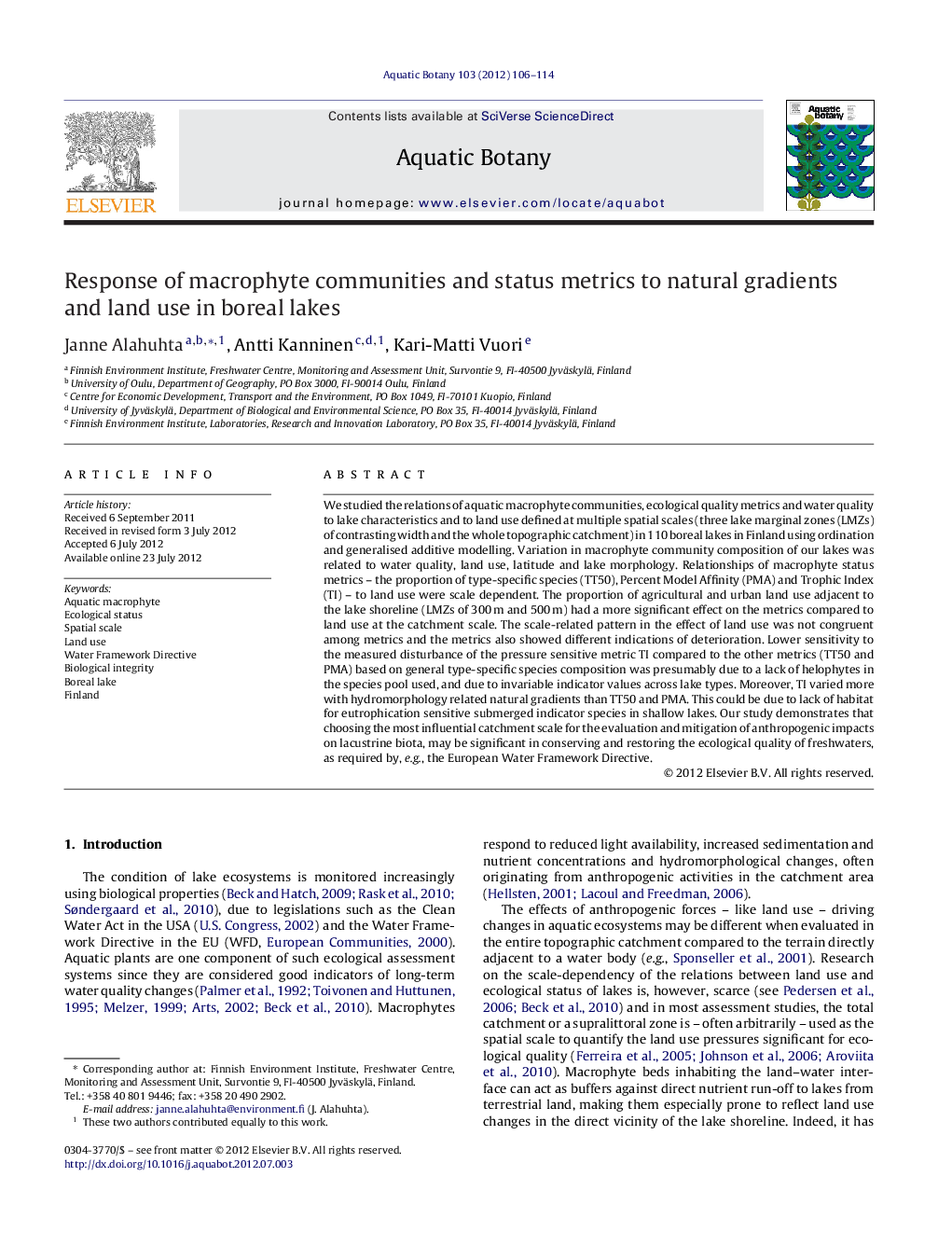| کد مقاله | کد نشریه | سال انتشار | مقاله انگلیسی | نسخه تمام متن |
|---|---|---|---|---|
| 4528009 | 1625839 | 2012 | 9 صفحه PDF | دانلود رایگان |

We studied the relations of aquatic macrophyte communities, ecological quality metrics and water quality to lake characteristics and to land use defined at multiple spatial scales (three lake marginal zones (LMZs) of contrasting width and the whole topographic catchment) in 110 boreal lakes in Finland using ordination and generalised additive modelling. Variation in macrophyte community composition of our lakes was related to water quality, land use, latitude and lake morphology. Relationships of macrophyte status metrics – the proportion of type-specific species (TT50), Percent Model Affinity (PMA) and Trophic Index (TI) – to land use were scale dependent. The proportion of agricultural and urban land use adjacent to the lake shoreline (LMZs of 300 m and 500 m) had a more significant effect on the metrics compared to land use at the catchment scale. The scale-related pattern in the effect of land use was not congruent among metrics and the metrics also showed different indications of deterioration. Lower sensitivity to the measured disturbance of the pressure sensitive metric TI compared to the other metrics (TT50 and PMA) based on general type-specific species composition was presumably due to a lack of helophytes in the species pool used, and due to invariable indicator values across lake types. Moreover, TI varied more with hydromorphology related natural gradients than TT50 and PMA. This could be due to lack of habitat for eutrophication sensitive submerged indicator species in shallow lakes. Our study demonstrates that choosing the most influential catchment scale for the evaluation and mitigation of anthropogenic impacts on lacustrine biota, may be significant in conserving and restoring the ecological quality of freshwaters, as required by, e.g., the European Water Framework Directive.
► Terrain adjacent to the lakes had the strongest effect on the macrophyte metrics.
► Scale-related pattern in the effect of land use was not congruent among metrics.
► TT50 and PMA performed better compared to TI.
► TI lacked type-specific reference conditions and helophytes from species pool.
Journal: Aquatic Botany - Volume 103, October 2012, Pages 106–114